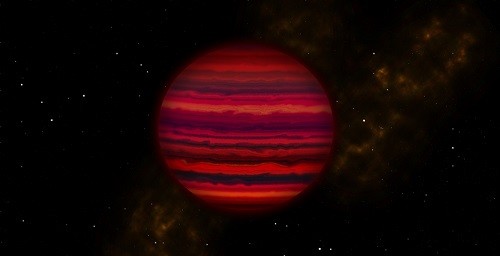For the first time ever, astronomers detected clouds of water outside our solar system, inside a large cosmic object known as WISE 0855 which is located some 7.2 light years away from our planet.
This object is similar to Jupiter or Saturn, however it is considered by scientists as a brown dwarf or a collapsed star. These types of stars often begin like most stars in the universe do, however their gravity sucked in clouds of gas and dust that it never triggered enough stellar fusion to form mass and become a complete star.
Today, WISE 0855 appears as a galactic ball with swirling stellar material of freezing gas and cosmic dust, which is also considered as the coldest object beyond the solar system at negative 10 degrees Fahrenheit, almost as cold as our own gas giant, Jupiter.
New findings were obtained from observations of the Gemini-North telescope located in Hawaii, that revealed the object's chemical composition leading to evidence of cloud formations made from water and ice.
According to Andrew Skemer from the University of California, Santa Cruz, we expected that this object with this cold enough temperature would host water clouds, making this the best evidence. Researchers also added how WISE 0855 is also a faint cosmic object that traditional spectroscopy methods would not yield any significant findings, instead, the team observed a specific spectral signature of thermal emissions within the deepest parts of its atmosphere with the Gemini Near Infrared Spectrograph.
Skemer explains that WISE 0855 is also five times fainter that any object that was ever detected using ground based spectroscopy in this specific wavelength. Since the team has already obtained this spectrum, further analysis and observations will be carried out to study this object.
Spectrum analysis shows that WISE 0855 is mostly covered by water vapor and clouds, making the appearance of this brown dwarf similar to Jupiter with thick, swirling clouds.
Using a model based on this spectrograph data, researchers developed simulations to determine the different atmospheric conditions of this brown dwarf, suggesting it would be rich in water vapor. Skemer adds that this spectrum can now allow to scientists to investigate dynamic processes and chemical properties present in Jupiter's atmosphere and also in extrasolar worlds.
This new study is published in the Astrophysical Journal Letters.


